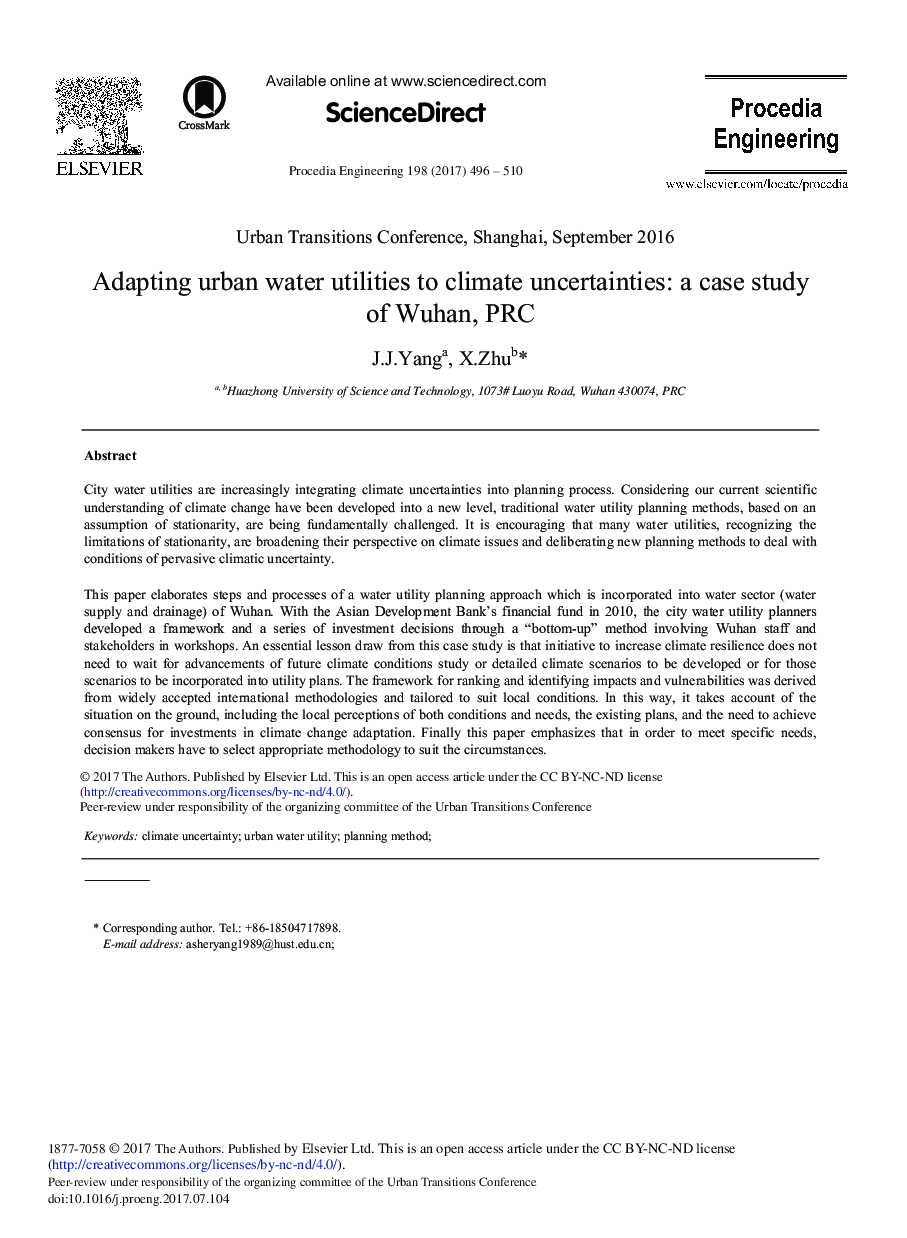| Article ID | Journal | Published Year | Pages | File Type |
|---|---|---|---|---|
| 5027414 | Procedia Engineering | 2017 | 15 Pages |
City water utilities are increasingly integrating climate uncertainties into planning process. Considering our current scientific understanding of climate change have been developed into a new level, traditional water utility planning methods, based on an assumption of stationarity, are being fundamentally challenged. It is encouraging that many water utilities, recognizing the limitations of stationarity, are broadening their perspective on climate issues and deliberating new planning methods to deal with conditions of pervasive climatic uncertainty.This paper elaborates steps and processes of a water utility planning approach which is incorporated into water sector (water supply and drainage) of Wuhan. With the Asian Development Bank's financial fund in 2010, the city water utility planners developed a framework and a series of investment decisions through a “bottom-up” method involving Wuhan staff and stakeholders in workshops. An essential lesson draw from this case study is that initiative to increase climate resilience does not need to wait for advancements of future climate conditions study or detailed climate scenarios to be developed or for those scenarios to be incorporated into utility plans. The framework for ranking and identifying impacts and vulnerabilities was derived from widely accepted international methodologies and tailored to suit local conditions. In this way, it takes account of the situation on the ground, including the local perceptions of both conditions and needs, the existing plans, and the need to achieve consensus for investments in climate change adaptation. Finally this paper emphasizes that in order to meet specific needs, decision makers have to select appropriate methodology to suit the circumstances.
